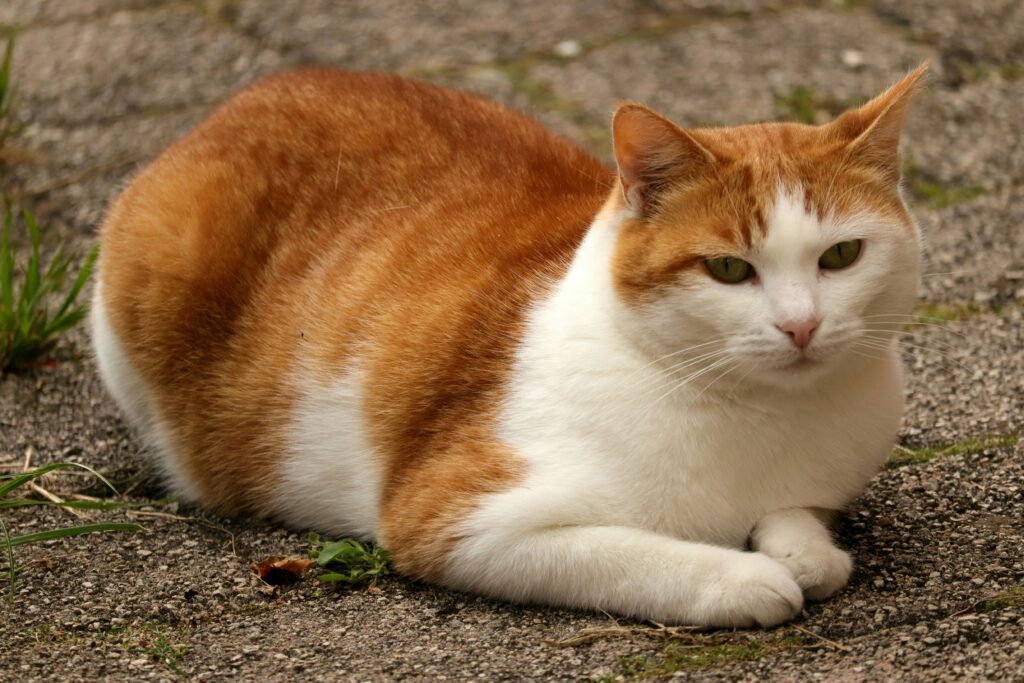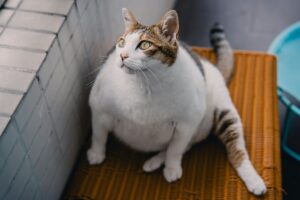I used to think my cat’s round belly was just “cute chubbiness” — until my vet told me she was overweight. Extra weight in cats isn’t just a cosmetic issue; it can lead to serious health problems like diabetes, arthritis, and heart disease. Since many cat owners don’t realize their cats are overweight, here’s a simple guide to help you recognize the signs and what you can do to help your feline friend stay healthy.

⚠️ Why Cat Obesity Is a Problem
Overweight cats are at higher risk for:
- Diabetes
- Liver disease
- Arthritis and joint pain
- Urinary tract issues
- Shorter lifespan
Even a few extra pounds can put a lot of stress on their small bodies.
🐾 Signs Your Cat Might Be Overweight
- No visible waist when viewed from above
- Rib check test: You can’t easily feel their ribs under the fur
- Sagging belly pouch (sometimes called a “primordial pouch,” but excessive size can signal fat buildup)
- Lack of energy or unwillingness to play
- Difficulty grooming hard-to-reach areas
👉 Vets use a Body Condition Score (BCS) from 1–9, where 5 is ideal. A score of 7+ usually means overweight.
🐱 Causes of Weight Gain in Cats
- Overfeeding (especially free-feeding dry kibble)
- Lack of exercise, especially for indoor cats
- Neutering/spaying (slows metabolism)
- Certain health conditions (thyroid issues, diabetes)

💡 How to Help Your Cat Lose Weight
- Vet Check First – Rule out underlying medical issues.
- Measure Food – Use a measuring cup, don’t just pour.
- Switch to Weight-Management Food – High-protein, low-carb diets are often recommended.
- Encourage Playtime – Toys, climbing trees, or 10–15 minutes of daily play.
- Slow Feeders – Special bowls make cats eat slower and feel fuller.
🎯 Final Thoughts
Helping your cat maintain a healthy weight is one of the best gifts you can give them. It’s not about making them “skinny,” but about giving them more energy, comfort, and years of life. Start with small changes, track their progress, and always work with your vet for the best results.